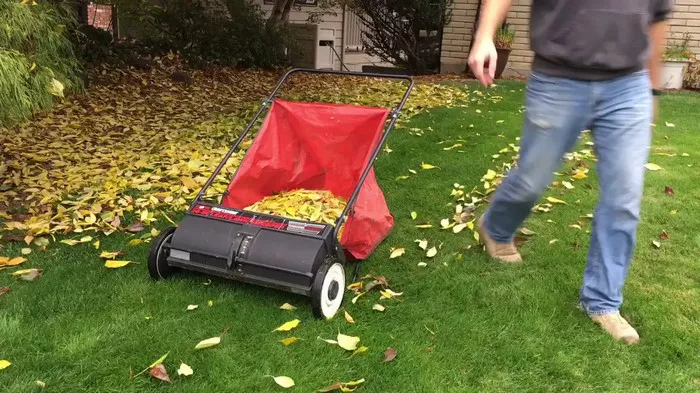In the realm of yard maintenance, a lawn sweeper stands as a stalwart companion, simplifying the arduous task of tidying up outdoor spaces. As the name suggests, a lawn sweeper is a device designed to efficiently gather debris scattered across lawns, from leaves and grass clippings to small twigs and other detritus. This article delves into the intricate mechanisms that power these essential tools, shedding light on their operation and benefits for homeowners and landscapers alike.
Components of a Lawn Sweeper:
A lawn sweeper comprises several key components, each playing a vital role in its function. The brush mechanism, typically located at the front of the sweeper, is responsible for agitating and lifting debris off the ground. As the sweeper moves forward, these brushes rotate, dislodging unwanted matter and propelling it towards the hopper.
The hopper serves as the collection bin for the gathered debris. Positioned directly behind the brush mechanism, it efficiently captures and stores the swept-up material until it’s ready for disposal. Wheels, strategically placed beneath the sweeper, facilitate smooth movement across the lawn, ensuring thorough coverage without causing damage to the grass or underlying soil. Finally, the handle provides the operator with control and maneuverability, allowing them to guide the sweeper with ease.
Operation Mechanism:
The operation of a lawn sweeper is a symphony of precision and efficiency. As the operator pushes or pulls the sweeper across the lawn, the brushes make contact with the ground, agitating and lifting debris into the path of the sweeper. With each rotation, the brushes sweep the gathered material towards the hopper, where it accumulates until the bin reaches its capacity.
Some advanced models feature height-adjustable brushes, allowing users to customize the sweeping depth to accommodate different types of debris and surface irregularities. Additionally, many lawn sweepers are equipped with adjustable hoppers, enabling easy dumping of collected debris without the need to dismount or manually empty the bin.
Types of Lawn Sweepers:
Lawn sweepers come in various configurations to suit different needs and preferences. Push lawn sweepers, operated manually by pushing them across the lawn, are ideal for smaller yards and areas with limited debris. Tow-behind sweepers, on the other hand, are attached to lawn tractors or ATVs, making them suitable for larger properties and commercial use.
Powered sweepers, equipped with engines or motors, offer added convenience and efficiency by eliminating the need for manual propulsion. These models are particularly well-suited for heavy-duty applications and large-scale landscaping projects. When selecting a lawn sweeper, consider factors such as yard size, terrain complexity, and personal preference to determine the most suitable option for your needs.
Benefits of Using a Lawn Sweeper:
The advantages of incorporating a lawn sweeper into your yard maintenance routine are manifold. Firstly, these devices save significant time and effort compared to manual raking or sweeping, allowing you to accomplish more in less time. Additionally, lawn sweepers provide a more thorough cleaning, removing debris more effectively and leaving behind a pristine lawn surface.
Moreover, by minimizing the need for manual labor, lawn sweepers reduce strain and fatigue on the operator, making yard work more enjoyable and sustainable. From enhancing curb appeal to promoting healthier grass growth by removing choking debris, the benefits of using a lawn sweeper are undeniable for homeowners and landscaping professionals alike.
Maintenance Tips:
Proper maintenance is essential to ensure the longevity and performance of your lawn sweeper. Regularly clean the brushes to prevent buildup of debris and maintain optimal sweeping efficiency. Lubricate moving parts, such as axles and brush bearings, to minimize friction and extend the lifespan of these components.
Additionally, inspect the hopper for any signs of wear or damage, and repair or replace as needed to prevent leaks or loss of collected debris. When not in use, store the lawn sweeper in a clean, dry environment to protect it from the elements and prolong its lifespan. By following these maintenance tips, you can maximize the effectiveness and durability of your lawn sweeper for years to come.
Conclusion:
In conclusion, lawn sweepers are indispensable tools for maintaining a clean and tidy outdoor environment. By understanding the components and operation of these devices, homeowners and landscapers can make informed decisions when selecting and using a lawn sweeper for their yard maintenance needs. Whether you opt for a push, tow-behind, or powered model, the efficiency and convenience afforded by a lawn sweeper are sure to enhance your outdoor experience and elevate the aesthetic appeal of your property.

